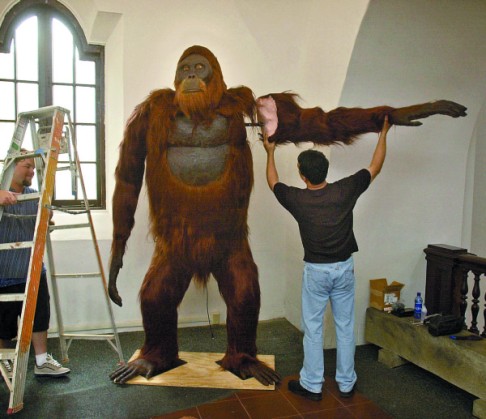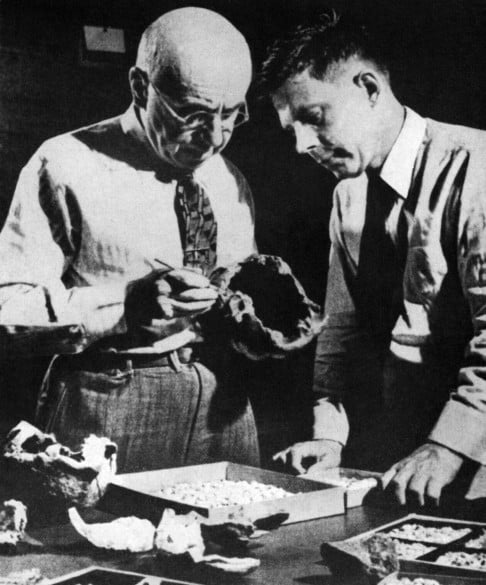King Kong in Hong Kong: giant ape fossil was found in a 1930s apothecary
Gigantopithecus weighed half a tonne, perhaps stood more than three metres tall and was a strict vegetarian. Colin Barras finds out what we have learned about the great ape in the 80 years since a German scientist stumbled on the fossil in a Chinese medicine store in Hong Kong

Hong Kong, 1935: a young palaeontologist picks his way through the backstreets, ducking in and out of apothecary shops. He's looking for dragon teeth, the Chinese name for old animal teeth used in traditional medicines. In a dusty drawer of trinkets, his eyes fall on a large molar unlike that of any living animal, and he instantly knows his search is over. The tooth belongs not to a dragon but an ape, and if its teeth are anything to go by, it was huge.
So begins the story of the discovery of a truly fantastic beast, the greatest of all great apes. According to some estimates, it stood 3.5 metres tall, weighed more than 500kg, and stalked the nightmares of the earliest humans to reach China. Its name? .

Eighty years after Ralph von Koenigswald stood dumbstruck in a Hong Kong pharmacy, fossils of the giant ape remain sparse. A jawbone fragment described earlier this year is just the fourth ever found. Those four pieces and several thousand teeth are our only evidence it even existed. But from these scraps, we are slowly piecing together an image of this real-life King Kong, how it lived and why it eventually vanished from the face of the planet.
Indonesia's 'hobbits' disappeared about same time modern humans arrived in Southeast Asia
Von Koenigswald was born in Berlin, Germany. From an early age, he yearned to hunt for evidence of humanity's ancestors. That meant one thing: a journey to Southeast Asia, home to the oldest and most primitive human fossils at the time. After a stint looking for in Indonesia, von Koenigswald's attentions turned to orangutans and their poorly studied ancestors. His particular stroke of luck was born of the realisation that he could take his search to Asian apothecary shops, where ground-up teeth are an important part of many traditional medicines.
